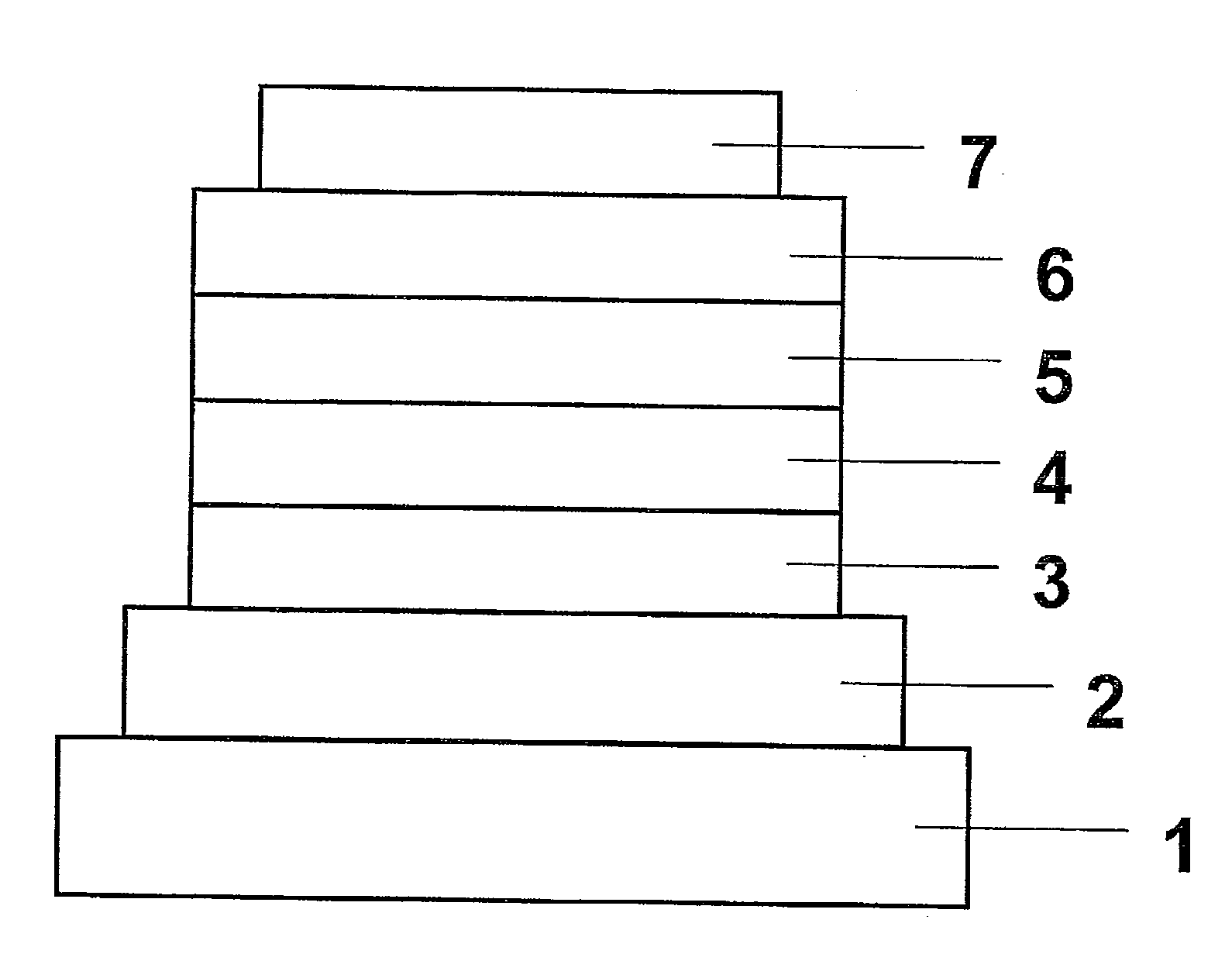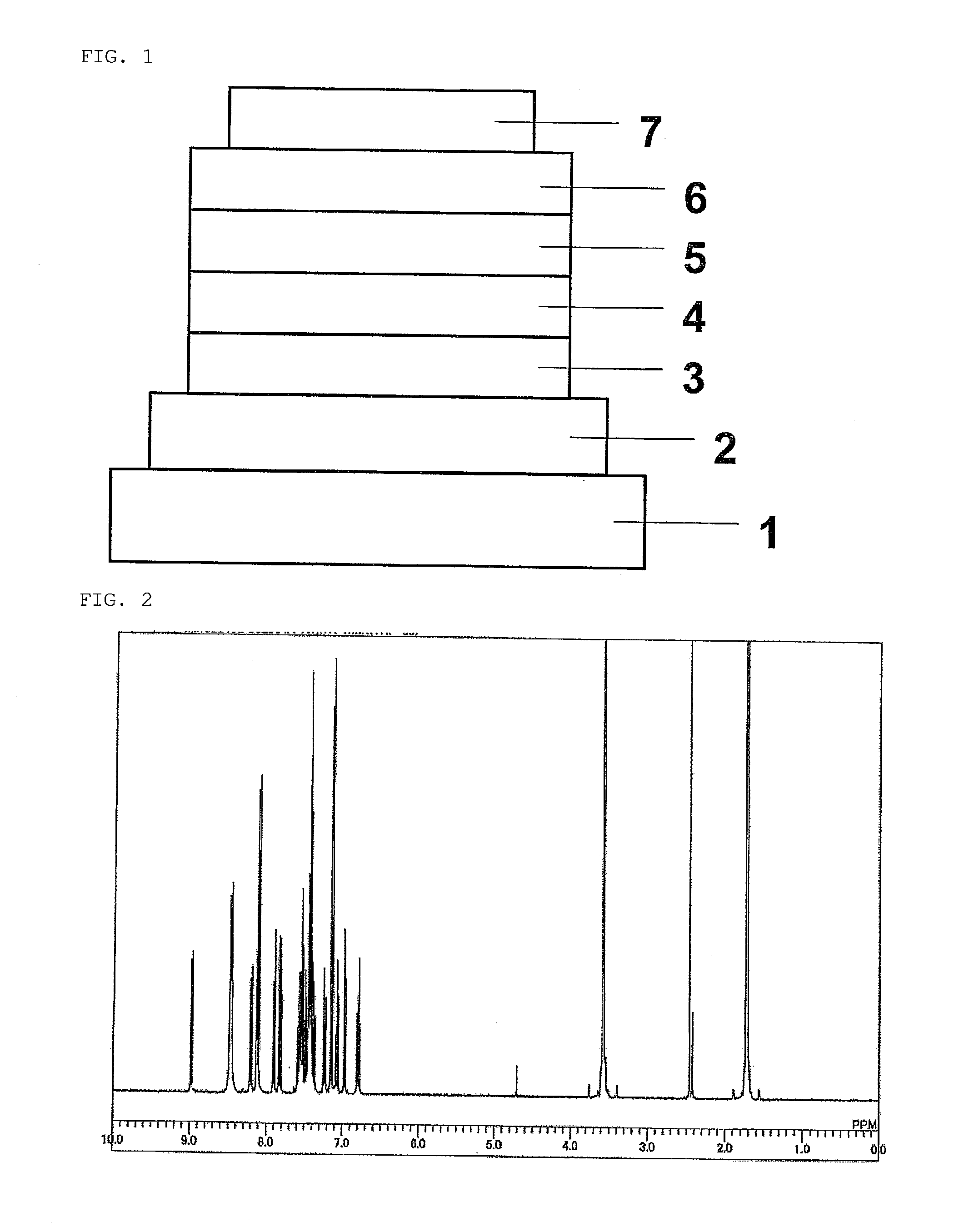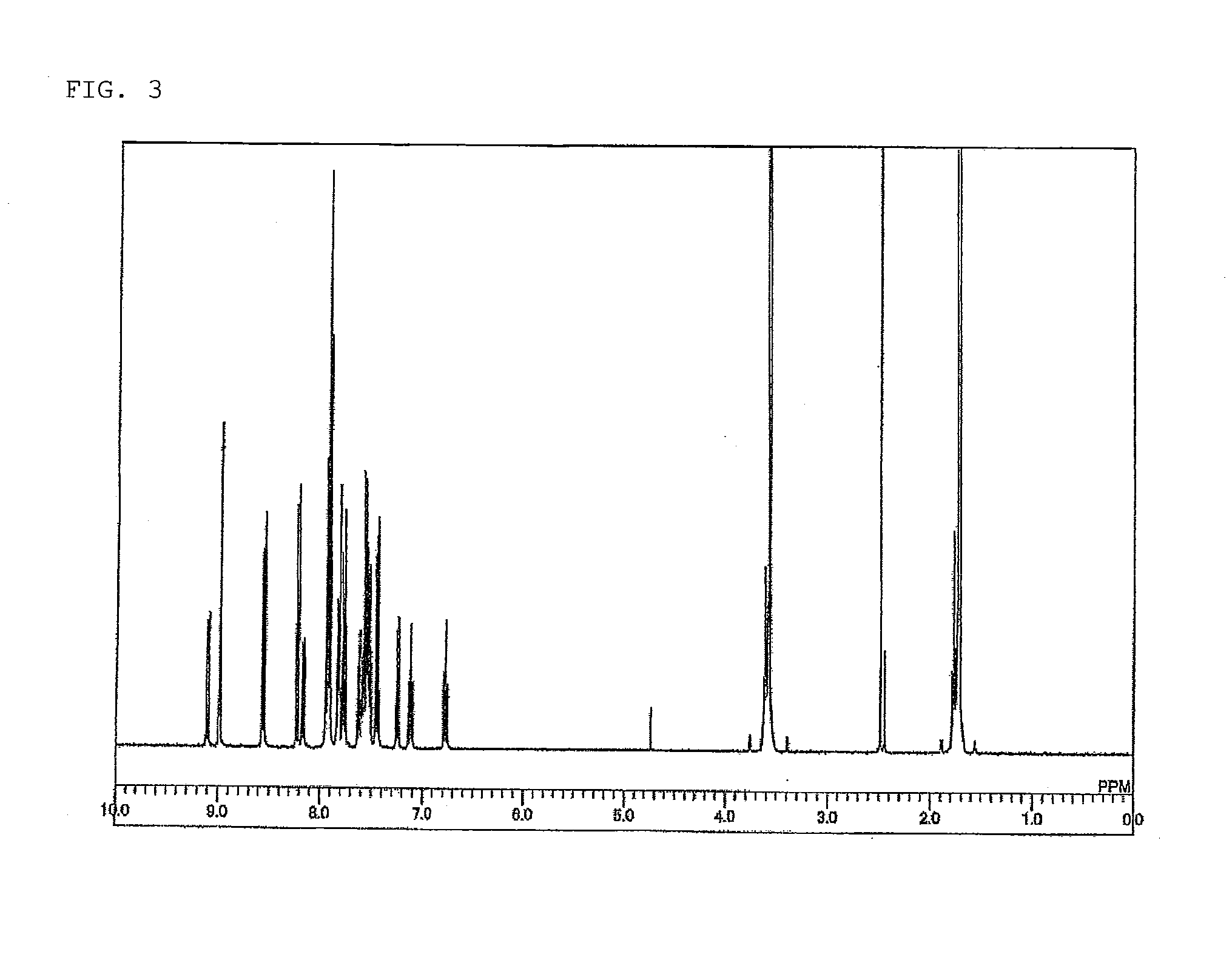Material for phosphorescent light-emitting element and organic electroluminescent element using same
a technology of phosphorescent light-emitting elements and organic electroluminescent elements, which is applied in the direction of thermoelectric devices, other domestic articles, anthracene dyes, etc., can solve the problems of high light-emitting efficiency that has not been achieved, and achieve high luminous efficiency, ensure sufficient stability in driving the device, and improve the luminous efficiency of the device
- Summary
- Abstract
- Description
- Claims
- Application Information
AI Technical Summary
Benefits of technology
Problems solved by technology
Method used
Image
Examples
synthesis example 1
Synthesis of 5,12-dihydroindolo[3,2-a]carbazole (IC)
[0088]
[0089]Under a nitrogen atmosphere, a hydrogen chloride gas produced by dropping 112.0 g (1.10 mol) of concentrated hydrochloric acid to 211.7 g (2.16 mol) of concentrated sulfuric acid over 1 hour was blown into a solution of 20.0 g (0.17 mol) of indole in 300 ml of dry diethyl ether, while the solution was being stirred at room temperature. After the reaction solution was stirred at room temperature for 15 hours, 121.0 g of ethyl acetate and 303.2 g of a saturated sodium hydrogen carbonate aqueous solution were added. After the aqueous layer in the mixture was extracted with ethyl acetate (2×100 ml), the organic layer was washed with a saturated sodium hydrogen carbonate aqueous solution (100 ml) and distilled water (2×100 ml). The organic layer was dried with anhydrous magnesium sulfate, followed by filtration of magnesium sulfate and vacuum distillation of the solvent. The resultant residue was dissolved in 150 ml of tolue...
example 1
Synthesis of Compound 34
[0091]
[0092]Under a nitrogen atmosphere, 73.3 g (0.29 mol) of IC, 87.8 g (0.35 mol) of 1-iodonaphthalene, 18.6 g (0.098 mol) of copper iodide, 154.8 g (1.1 mol) of potassium carbonate, and 800.0 g of 1,3-dimethyl-2-imidazolidinone were added and the mixture was stirred. After that, the mixture was heated to 190° C. and stirred for 120 hours. The reaction solution was cooled to room temperature, followed by filtration of inorganic compounds. The filtrate was added to 3,000 ml of water and the mixture was stirred, followed by filtration of the precipitated crystal. The crystal was subjected to drying under reduced pressure and was then purified by column chromatography, yielding 43.8 g (0.11 mol, yield 40%) of an intermediate (C2) as a white powder.
[0093]Under a nitrogen atmosphere, 1.7 g (0.041 mol) of 56.4% sodium hydride and 50 ml of dry N,N-dimethylformamide (DMF) were added and the mixture was stirred. 50 ml of dry DMF were added to 10.0 g (0.026 mol) of t...
example 2
Synthesis of Compound 36
[0095]
[0096]Under a nitrogen atmosphere, 10.0 g (0.039 mol) of IC, 39.8 g (0.20 mol) of iodobenzene, 6.2 g (0.098 mol) of copper, 8.1 g (0.059 mol) of potassium carbonate, and 200 ml of tetraglyme were added and the mixture was stirred. The mixture was then heated to 190° C. and stirred for 24 hours. The reaction solution was cooled to room temperature, followed by filtration of copper and inorganic compounds. 200 ml of distilled water were added to the filtrate and the mixture was stirred, followed by filtration of the precipitated crystal. The crystal was subjected to drying under reduced pressure and was then purified by column chromatography, yielding 9.7 g (0.029 mol, yield 75.0%) of an intermediate (C3) as a white powder.
[0097]Under a nitrogen atmosphere, 10 g of dry tetrahydrofuran (THF) were added to 3.65 g (0.15 mol) of magnesium, followed by stirring. 0.05 g (0.0040 mol) of iodine was added to the mixture, followed by heating to 70° C. While the mix...
PUM
 Login to View More
Login to View More Abstract
Description
Claims
Application Information
 Login to View More
Login to View More - R&D
- Intellectual Property
- Life Sciences
- Materials
- Tech Scout
- Unparalleled Data Quality
- Higher Quality Content
- 60% Fewer Hallucinations
Browse by: Latest US Patents, China's latest patents, Technical Efficacy Thesaurus, Application Domain, Technology Topic, Popular Technical Reports.
© 2025 PatSnap. All rights reserved.Legal|Privacy policy|Modern Slavery Act Transparency Statement|Sitemap|About US| Contact US: help@patsnap.com



